HTC Desire 816 Review
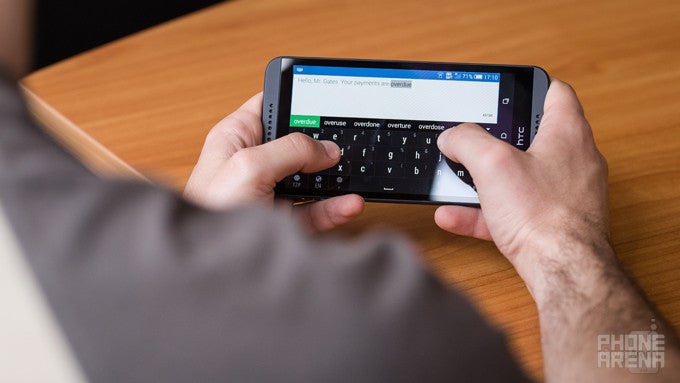
Introduction
Until recently, one could easily figure out whether a given Android smartphone was a low-end, a mid-range, or a high-end device solely by having its size into consideration. The bigger the phone, the higher its rank was in the Android ecosystem. Things, however, have changed a bit over the past couple of years or so. Mid-range handsets of phablet caliber have started popping up already, and HTC is one of the newcomers to the party.
Meet the HTC Desire 816. Described by its maker as a “flagship mid-range” phone, it strikes a great balance between price and features with its generous 5.5-inch display, quad-core processor, and 13MP camera. At the same time, goodies borrowed straight from the company's flagship, the HTC One (M8), are making an appearance in HTC's phablet, including the gorgeous Sense 6.0 interface and the awesome pair of front-facing BoomSound speakers. All of this can be yours for around $400 off-contract, which seems like a pretty sweet deal. Or is it?
Design
A plastic device at its core, but with a solid, reassuring feel to it.
HTC has taken a minimalist approach when designing the Desire 816. With its straight lines, subtle curves, and flat front and back sides, the handset is both a pleasure to hold an admire. Sure, it is a plastic-made phone in essence, but it feels solid, sturdy, and reliable. The trim around the sides has a matte finish and an almost rubbery-like feel to it, which provides plenty of friction for a surprisingly comfortable grip. On the downside, the glossy plastic back of the phone attracts a certain dose of finger smudge, but a quick wipe with a soft piece of cloth is enough to get rid of it. i
Of note is also the considerable physical size of the HTC Desire 816. Measuring 6.17 by 3.10 inches (156.6 by 78.7 centimeters), it is difficult to operate single-handedly and to carry in a pair of jeans' side pocket. Moreover, it is a rather tall handset, presumably to accommodate the pair of BoomSound speakers. Yup, the 816 offers stereo front-facing speakers, just like the HTC One (M8), but we'll save our comment on their quality for later.
The power and volume keys on the HTC Desire 816 are positioned on its left side. These can be hard to reach unless one resorts to their second hand in order to operate them. Furthermore, the keys lack in feedback and travel. Virtual on-screen buttons are used for navigating through the software's interface. These, at least, are easier to reach by the user's thumb. On the right side of the HTC Desire 816 reside the microSD and Nano SIM card slots. These are protected by a flap that rests flush with the handset's side, thus not disrupting the design's seamless lines.
Display
Plentiful real estate with satisfactory resolution make for an overall likeable display.
The massive LCD display is one of the HTC Desire 816's key selling points. It measures 5.5 inches in diagonal, which puts the handset in the trendy phablet category. Some potential buyers, however, might find its pixel count a tad disappointing – the panel has a resolution of 720 by 1280 pixels, producing a PPI figure of 267 pixels per inch. On one hand, this is clearly not the sharpest smartphone display in existence as the 400 ppi barrier has long been shattered. But on the other hand, we find its resolution perfectly acceptable given the Desire 816's class. We can comfortably browse our favorite internet sites and read articles after zooming a bit on them. Watching videos and photos, as well as playing games, are also pleasurable experiences thanks to the screen's generous size.
As far as color reproduction goes, we're mostly satisfied with what our eyes see. However, the Desire 816's screen has a color temperature of 7404 Kelvins, which is a bit off from the reference figure of 6500 K. Whites have a slightly cold tone as a result, although the deviations are tolerable. Primary colors come pretty close to their reference points, as our measurements confirm. Colors do not exhibit any significant under- or oversaturation.
Using the HTC Desire 816 under broad daylight is possible thanks to its decent brightness output of 389 nits. Things, however, get a bit hard to see if light is reflected straight at the user. On top of that, the display's surface can easily get covered in fingerprints, which could potentially hinder its outdoor usability. The screen's minimum brightness of 12 nits is okay. Having this figure in mind, the user's eyes should not be subjected to too much strain while the phone is used at night.
Interface
The latest Android has to offer, with a dose of Sense 6.0 on top.
HTC is launching the Desire 816 with the most up-to-date version of Android that is available – Android 4.4.2 KitKat. The platform, however, has undergone a series of visual modifications as Sense 6.0, HTC's custom user interface, runs on top. The UI is praised for its simplistic style and visual consistency – traits that rank it among the best of its kind.
Functionality has not been overlooked either. As a matter of fact, a number of features found on the HTC One (M8) flagship have been brought over to the Desire 816. Among them is BlinkFeed, which is one of the UI's highlights. Basically, it is a home screen dedicated to aggregating your social networking news feeds with articles from online news outlets, thus bringing relevant information at the user's fingertips, available at a swipe's distance. You might like this feature if you're a heavy SN user, but in case you're not, you're totally free to turn BlinkFeed off.
Further UI alterations include a lock screen enhanced with app shortcuts and gestures that take the user to either BlinkFeed or their home screen, depending on the swipe's direction. Unlike the HTC One (M8) however, the Desire 816 lacks the double-tap-to-wake function, and its camera can't be accessed by holding down the volume key.
Messaging
HTC's messaging app may seem simple at a glance, but it has a number of tricks up its sleeve. Users have the option to move private texts to a secure box, where they'll be password-protected against prying eyes. An SMS backup/restore feature has been thrown in as well.
The on-screen keyboard on the HTC Desire 816 is spacious and comfortable to operate using two thumbs in either portrait or landscape mode. Accuracy shouldn't be an issue, and even if you make a typo, the keyboard can take care of it automatically. Word prediction and swype-like input are featured as well.
Processor and memory
A mid-range Qualcomm Snapdragon SoC outfitted inside a mid-range phone.
A Snapdragon 400 SoC, model MSM8928, powers the HTC Desire 816, all the while putting the “mid-range” in the phone's description as a “mid-range flagship”. The chip features a quad-core, ARM Cortex-A7 based CPU with a maximum clock speed of 1.6GHz, as well as Adreno 305 graphics. To no surprise, a setup like this produces average benchmark scores, but don't let any of this disturb you. In reality, the phone's performance is satisfactory. The UI is responsive, even though it skips a frame every now and then. We did not experience any serious cases of lag during our testing.
For those wondering whether or not the Desire 816 can handle any games, we bring both good and bad news. The phone should be able to run most new titles, including ones featuring plenty of 3D action. However, performance drops may be experienced with heavier, graphically intense games.
There are 1.5GB of RAM inside the HTC Desire 816, which is a reasonable amount for a phone of this caliber. Multitasking is not an issue – switching back and forth between tasks is a swift process.
On-board storage space on the HTC Desire 816 is scarce. Only 4.2GB are available to the user (out of a total of 8GB), which is why it is highly recommended to equip the phone with a microSD card of considerable size.
Internet browser and connectivity
With its acceptable browser performance and large screen, the Desire 816 is very suitable for web browsing.
There is a couple of web-browsers pre-loaded onto the HTC Desire 816. One of them, labeled simply as Internet, loads pages fast, but its performance isn't flawless. We've been noticing a slight lag when browsing web sites, and the heavier the page is, the more pronounced this lag becomes. And besides, we don't quite like the tab switching interface as it takes too long to go from one tab to another. The out-of-the-box alternative is Chrome, Google's own web browser. As a whole, we find it slightly more responsive, and the slight lags that may occur from time to time aren't bothering at all. Having that in mind, we can say that the HTC Desire 816 is a phone that's very suitable for browsing the web. The overall browser performance is acceptable, and the large screen allows for a comfortable viewing experience.
As far as connectivity goes, there's nothing that the HTC Desire 816 lacks. Bluetooth 4.0, Wi-Fi, GPS, FM radio, and NFC are all on board, along with LTE on bands 3, 7, 8, and 20. When LTE is not available, the smartphone falls back to HSPA+ at rates of up to 42.2Mbps. We must also mention that a dual-SIM model of the HTC Desire 816 is available, for those who need the functionality.
Camera
Not ideal, but surely among the best in the Desire 816's price range.
The HTC Desire 816 comes with a 13MP main camera, which is pretty generous considering the device's mid-range class. A single LED light is right next to it to help in those tricky low-light scenes. We are also surprised to find a 5MP front-facing camera with wide-angle lens on this one. Rest assured that your selfies are going to turn out splendid.
Launching the Camera application brings forth a familiar interface. It is very clean, with no buttons and knobs in the viewfinder's way, and the image adjustments are only a few taps away. It is convenient that we're allowed to switch between the front and the rear cameras with a simple swipe.
Unlike the HTC One (M8), the HTC Desire 816 will not give you access to manual controls for the focus and white balance. It will, on the other hand, let you tweak the ISO and exposure value, while the white balance can be modified by applying one of several presets. Plus, you get a variety of filters, HDR and panorama modes, and an Anti-shake digital image stabilization for still images.
As for the actual image quality, it turns out that the HTC Desire 816 is a capable shooter, and probably one of the best performers in its price range. It preserves details naturally in its photos, adding just a hint of sharpness and contrast for a better look. Digital noise can be seen when viewing images at 100% zoom, but the large number of pixels makes up for that, which is why scaled down images look lovely. The warm tone of the morning sun has been preserved well in our photo samples. Bright objects in the frame, however, are likely to “burn” out should the dynamics range of the scene turn out to be greater than what the camera can capture.
Indoor photos from the HTC Desire 816 turn out detailed enough. There's a higher presence of artifacts and digital noise, but it is all within a tolerable range. The color tone in neutral to warm, depending on how much ambient light there is around. And if lights are too dim, the LED light provides enough illumination without distorting the image's color accuracy.
The HTC Desire 816 shoots 1080p video at 30 fps, 720p videos at 60 fps, and slow-motion videos at 120 fps with a resolution of 768 by 432 pixels. Full HD footage looks good, albeit a bit too contrasty. Details are sufficient, and the camera's auto-focus works fast enough. Note that by default, the camera locks its focus in videos, requiring the user to use taps to change the focus distance, but continuous auto-focus can be enabled from the settings menu. Low-light videos are usable, but noisy and with a fair amount of motion blur.
Multimedia
The large screen and front-facing speakers make the HTC Desire 816 very suitable for multimedia consumption.
The Music player bundled with Sense 6.0 has a clean interface that is easy to get the hold of. Audio can be grouped by album, artist, or song name, and whatever album art happens to be missing from your library can be downloaded automatically from the internet. It is also nice to see that HTC has added an audio visualizer and support for lyrics, which scroll as the music is played. There is no equalizer, however, so you don't have any freedom to fine tune the audio reproduction to your liking. Alternatively, one is free to use Google's Play Music application instead of HTC's solution.
HTC has not included a dedicated video player application with its custom UI. That's why your options are to either watch videos from the Gallery application, or download a third-party app from the Play store. Should you choose to stick with the former, you won't be able to enjoy DivX videos as those aren't supported by the Gallery app. Other popular formats, however, run perfectly fine at resolutions of up to 1080p. The video playback interface is very clean and easy to navigate. It comes with a built-in editor that can trim videos to a desired length.
As we already mentioned, the HTC Desire 816 sports a pair of front-facing stereo speakers dubbed BoomSound. These appear to be identical to the ones outfitted on the One (M8) as the sound they produce is equally good. Audio output is clear, loud, without any clipping sounds, and there's even a fair presence of lower-end frequencies. It goes without saying that the speakers turn watching movies and playing games on the Desire 816 into a very pleasurable experience.
Call quality

Battery life
Inside the HTC Desire 816 is packed a non-removable battery with a capacity of 2600mAh, which is decent given the smartphone's class and size. According to the manufacturer, the phone should be capable of delivering up to 21 hours of 3G talk time and should last for over a month if left on stand-by. We ran our custom battery benchmark on it and got a pretty good result of 6 hours 11 minutes, which puts the Desire 816 in the same category with the Galaxy Note 3 and Note 2 phablets. All in all, you should be able to get at least a day of intensive action, or a couple of days of light to heavy use without reaching for a charger.
Like the HTC One (M8) flagship, the Desire 816 comes with a so-called Extreme Power Saving mode, which is meant to be used in emergencies – in cases when you're very low on juice, and a charger is not around. In a nutshell, it shuts down all but the phone's basic connectivity features, reduces the screen's brightness, and switches to a lightweight user interface, thus providing hours of extra stand-by time even if the phone is down to its last 10% of juice.
Conclusion
Well, what do you know: the HTC Desire 816 is an admirable mid-range smartphone, especially knowing that it can be bought for under $400 in markets where it is available. We don't find anything wrong with it given its price range, so guys, if you're on the looks for an inexpensive phablet, this here is one you should check out.
The HTC Desire 816 strikes a good value for money ratio with its solid build quality, large 720p display, and its snappy UI performance. On top of that, you may be surprised by the results produced by its 13MP main camera, while the 5MP front-facing one will leave you very satisfied with your selfies. And seriously, how many smartphones of this price range can offer you a set of front-facing speakers?
Processing power, however, is one of the things that the HTC Desire 816 could have had more of. On one hand, its quad-core Snapdragon 400 SoC has no troubles pushes the UI around, but not all of those demanding video games would run smoothly on it.
In case you don't think that the HTC Desire 816 is the right smartphone for you, feel free to try the Samsung Galaxy Note 3 Neo. Samsung's offering delivers an eye-catchy Super AMOLED display of 5.5 inches and a very capable hexa-core Exynos SoC, but it is also likely to carry a higher price tag at your local retailer. Or take the Sony Xperia T2 Ultra for a spin. The phone is, again, slightly more expensive off-contract than the Desire 816, but in return you get a larger screen and a bigger battery with outstanding longevity.
Software information for the reviewed unit: Android 4.4.2, Software number 1.23.401.1, Sense 6.0

Follow us on Google News

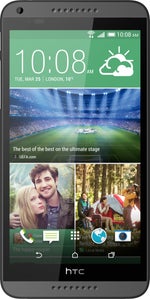
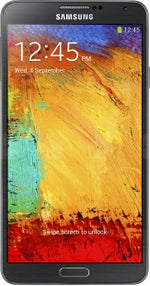
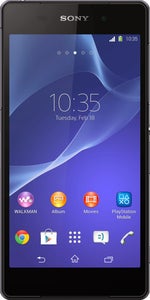
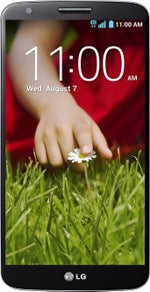
















![Some T-Mobile users might be paying more starting in March [UPDATED]](https://m-cdn.phonearena.com/images/article/176781-wide-two_350/Some-T-Mobile-users-might-be-paying-more-starting-in-March-UPDATED.webp)











Things that are NOT allowed:
To help keep our community safe and free from spam, we apply temporary limits to newly created accounts: